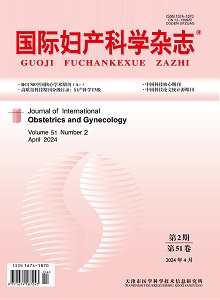Objective: To understand the changing trends of gynecological diseases burden and its age, period, and cohort effects among Chinese women from 1990 to 2019, and to provide a scientific basis for the development of prevention and control strategies for gynecological diseases. Methods: Using data from the Global Burden of Disease Study 2019 (GBD 2019), a Joinpoint regression model was used to analyze the incidence rate of gynecological diseases and disability adjusted life year (DALY) rate in China. Trends of gynecological diseases and DALY rate in China were investigated based on the age-period-cohort model to explore the effects of age, period and cohort effects on incidence and DALY rates, and to analyze the parity of incidence and DALY rates of premenstrual syndrome, genital prolapse, uterine fibroid tumors, endometriosis, and polycystic ovary syndrome. Results: The incidence rates of gynecologic diseases and DALY rates among Chinese women showed a decreasing trend from 1990 to 2019, with an average annual decrease of 0.63% (95%CI: -0.73% to -0.54%, P<0.05) and 0.34% (95%CI: -0.43% to -0.24%, P<0.05), respectively. The results of the age-period-cohort model showed that the longitudinal age curves of both the incidence of gynecological diseases and the DALY rate in Chinese women from 1990 to 2019 showed an increasing and then decreasing trend, peaking at the age of 30 to 34 years. The risk of female gynecological disease incidence and the risk of DALY both showed a decreasing trend as the period progressed, with 2000—2004 as the reference period (RR=1), and the risk of incidence declined to the lowest in the 2015—2019 period (RR=0.73, 95%CI: 0.74 to 0.71). The risk of incidence and the risk of DALY trended downward in the 1905—1909 to 1985—1989 birth cohorts and slightly upward in the 1990—1994 to 2000—2004 birth cohorts. 1990 and 2019 premenstrual syndrome incidence (7 245.53/100 000, 5 695.02/100 000) and DALY rate (222.21/100 000, 197.95/100 000) topped the list of common gynecological disorders in 1990 and 2019. Conclusions: China has made some progress in reducing the disease burden of female gynecological diseases, but disease burden is still serious, and health promotion and education on gynecological diseases in young women should be strengthened, targeted screening should be carried out, and diagnostic and treatment techniques should be improved to continue to reduce the burden of female gynecological diseases in China.

